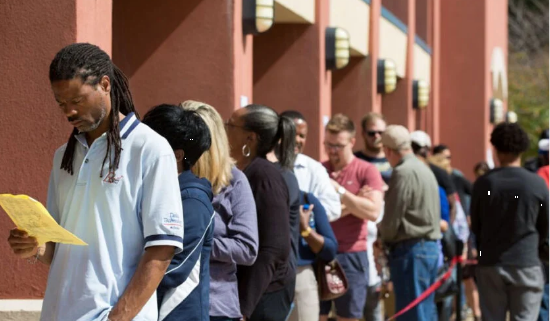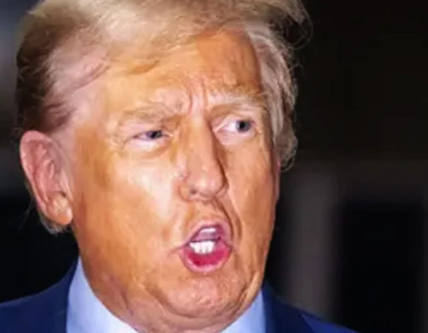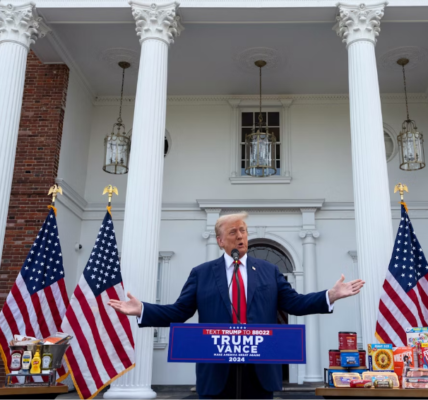
The Trump campaign and congressional Republicans are increasingly anxious over a significant surge in early voting, viewing it as a potential advantage for Vice President Kamala Harris and the broader Democratic effort. As early voting ramps up this election season, the Harris campaign is working diligently to mobilize supporters, particularly young voters, who are often seen as unreliable on Election Day.
Democrats hope that a strong early voting turnout will counteract the traditional Republican advantage among those who vote on Election Day. Early voting numbers can serve as indicators of overall voter enthusiasm, and so far, there are positive signs for Team Harris. In Georgia, for example, approximately 310,000 votes were cast on the first day of early voting—a substantial increase compared to the first days of voting in the 2020 presidential election and the 2022 midterms, which saw about 135,000 votes each.
Democratic strategist Basil Smikle emphasized that high early voting figures indicate an engaged electorate, especially as the campaign enters its final stretch. This enthusiasm is crucial for Democrats, who tend to benefit from higher overall turnout.
To capitalize on this momentum, Harris and key surrogates have been actively campaigning in pivotal battleground states. For instance, Minnesota Gov. Tim Walz visited North Carolina on the first day of early voting, while Second Gentleman Doug Emhoff was in Georgia, where early voting commenced. At a rally in Erie, Pennsylvania, Harris encouraged attendees to vote early, highlighting the county’s significance as a bellwether.
While early voting gained traction during the COVID-19 pandemic in 2020, the trend appears to be continuing even as health concerns have eased. However, Trump has recently shifted his stance on early voting, acknowledging its importance during a rally in Georgia.
Democrats view their push for early voting as part of a broader strategy to increase overall turnout. Historical patterns suggest that high-turnout elections favor Democrats, while low-turnout elections tend to benefit Republicans. This is particularly relevant in midterm elections, where reliable voting blocs, often older and leaning Republican, can sway results.
The ability to track early voters allows campaigns to focus their efforts on those who have yet to cast their ballots, enhancing get-out-the-vote strategies. Former Harris communications director Jamal Simmons noted the strategic advantage of securing early votes, reducing the risks associated with potential obstacles on Election Day.
Democratic strategists agree that encouraging early voting is essential, especially for constituents with demanding schedules. “A vote is a vote, whether it’s early or on the day of,” said Democratic strategist Al Mottur, stressing the importance of capturing votes before Election Day challenges arise.
However, experts caution against reading too much into early voting trends. Historical shifts mean that early voting dynamics are continually evolving. Princeton historian Julian Zelizer pointed out that while early voting in 2020 favored Democrats, the current landscape is different, with Republicans also mobilizing efforts to encourage early participation.
“It is really hard to read the tea leaves, and the dynamics seem a little different this time,” he said. “I don’t think we can read into this that it is automatically good for Democrats.”
Despite these uncertainties, Democrats remain optimistic about the implications of robust early voting numbers. Mark Longabaugh, a Democratic strategist, expressed that any strong turnout in battleground states is likely a positive sign for the party as they head toward Election Day.
“I think it’s encouraging,” Longabaugh remaked. “Anytime in a battleground state that the vote is robust, I think that’s probably good for Democrats.”



